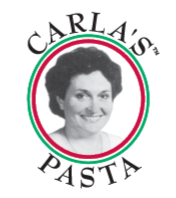The Greater New Haven Chamber of Commerce has recognized 12 distinctive millennial leaders who are "making an outstanding difference in the professional and outside world."
In making their selections, the Chamber indicated that "from organizing community events, working with charities on weekends or holidays, or tireless public outreach - these are the people that lead by example to the entire millennial generation and the rest of us."
The Chamber's young professional organization, PULSE, made the selections from those nominated for the recognition. The announcement was made at a reception at the conclusion of the Chamber's day-long business expo, The Big Connect, held Thursday at the Oakdale Theater in Wallingford.
The millennial move makers for 2016 are:
Jack Yeung, a serial entrepreneur, attended St. John’s University for his Doctorate of Pharmacy degree. He started his own pharmacy in 2010, after noting he could offer services that other pharmacies were not offering, such as delivery. Jack who now owns pharmacies in Southbury, Danbury and one in the Bronx, started the Panic Room: Escape Room Entertainment in Norwalk, CT, which challenges participants while providing a safe and fun real-life adventure. Jack’s latest business venture is the opening of The Halal Guys Restaurant in New Haven this fall.
Ashley Calabrese is responsible for developing and implementing effective lobbying strategies and grassroots advocacy campaigns to best suit her clients’ interests. She works with the state legislature, the executive branch, municipal leaders and the Connecticut congressional delegation. Her efforts have created better insurance coverage for more advanced forms of breast tissue sc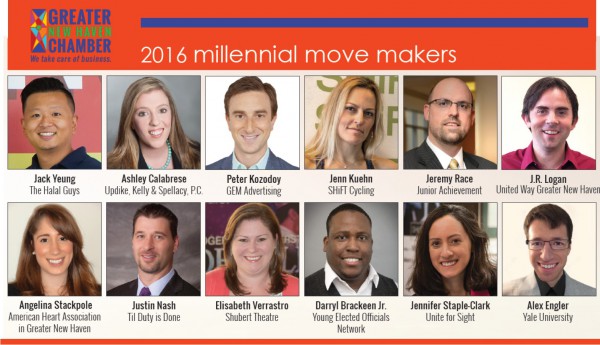 reening, including coverage for ultrasound and MRI screening. Through volunteer efforts, Ashley has advanced legislative efforts for ‘Are You Dense Advocacy’ to ensure that women with dense breast tissue have access to an early breast cancer diagnosis. She helped form the Danny Gilman Scholarship in memory of one of their peers. Ashley serves as President of the Association of Connecticut Lobbyists.
reening, including coverage for ultrasound and MRI screening. Through volunteer efforts, Ashley has advanced legislative efforts for ‘Are You Dense Advocacy’ to ensure that women with dense breast tissue have access to an early breast cancer diagnosis. She helped form the Danny Gilman Scholarship in memory of one of their peers. Ashley serves as President of the Association of Connecticut Lobbyists.
Peter Kozodoy is an author, speaker, serial entrepreneur, and the Chief Strategy Officer of GEM Advertising. His work at GEM has been featured in CNBC, Yahoo!, Bloomberg, Reuters, MarketWatch and more, and has earned Telly, Pixie, Communicator, Aurora, Davey and W3 awards in U.S. and international branding, advertising and production. He has spoken for Microsoft, the US Department of Commerce, and CEO Clubs of America on topics like millennials, and global advertising. He serves on the boards of the Greater New Haven Chamber and Junior Achievement in Connecticut. He is also a SAG/AFTRA professional actor, a three-time New England Champion in Men’s Figure Skating, and a black belt in Taekwondo.
Jenn Kuehn began SHiFT Cycling with a vision to create a workout experience that is accessible yet challenging to every rider, no matter where they are in their fitness levels. She left the high-powered world of corporate sales to create an inspirational local fitness experience. In less than a year, Jenn built a reputation for inspiring effective workouts in a judgment-free environment. Still sensing a missing need for a greater connection between motivation, mind and body, she launched SHiFT Cycling in March 2014. In 2015, Jenn and the team evolved and created SHiFT New Haven. In 2016 Jenn launched her newest fitness concept SHiFT Balance, a studio designed for barre, yoga, kickboxing, strength and mediation classes.
Jeremy Race is the President and CEO of Junior Achievement Southwest New England. Through Junior Achievement, Jeremy is helping young people dream big about their futures and teaching them the strategies to achieve those dreams. Each year, Jeremy has the pleasure of working closely with several JA students in preparation for their speaking roles at JA’s annual Partners in Achievement breakfasts in Hartford and New Haven. At last year’s event, Jeremy was proud to watch Josslyn, a student from New Britain who at one point was on track to not graduate from high school, stand up in front of 400 guests and state that thanks to JA, “I will graduate high school. I will attend college. I will be successful.” It was a moving moment and Jeremy will never forget.
J.R. Logan has worked as a volunteer to organize the establishment of a trail along the Mill River in New Haven. He serves on the boards of the New Haven Land Trust and Eli Whitney Museum. He led Cluefest for several years and is a cofounder and Chief Maker at MakeHaven, a community makerspace where anyone can participate in 3D printing, laser cutting, wood working, sewing, metal milling, electronics fabrication, programming, mold making, bike repair and more. In this role, he fosters a community of more than 100 entrepreneurs, artists and craftspeople. J.R. is also employed as Director of Digital Resources for United Way of Greater New Haven, where he works to implement organizational learning and technology locally as well as being a significant contributor to technology advancement in the worldwide United Way network.
Angelina Stackpole is a Director at the American Heart Association in Greater New Haven, where she oversees corporate fundraising and wellness initiatives in Greater New Haven. She is responsible for the Greater New Haven Heart Walk, which raises awareness and funds for cardiovascular diseases and stroke. In the past five years, Angelina has increased annual revenue from the event by 50%, and has grown participation to nearly 5,000 area professionals and community members. She is also responsible for starting an annual Connecticut-wide event that provides fun activities, support, and networking to families who have children suffering from congenital heart disease. Angelina currently serves as Chair on the PULSE Board of Directors.
Justin Nash, following his graduation from West Point in 2001, was commissioned as an Infantry Officer where he led an infantry platoon deployed to serve in Afghanistan. He was awarded the Bronze Star Medal, Army Commendation Medal, Army Achievement Medal, and Global War on Terrorism Expeditionary and Service Medals. His military career was cut short due to injuries sustained in the line of duty. He has also served as a project manager in the energy industry where he delivered complex projects over $10 million. Justin is the founder of Veteran Construction Services LLC and serves as president of Til Duty is Done, an organization he founded to help restore and improve the lives of veterans through supportive housing and employment opportunities.
Elisabeth Verrastro has a passion and drive to make live performance accessible to everyone and loves seeing her work come to life when the curtain rises and the audience erupts into applause. She is the Shubert Theatre’s Director of Development & Communications. Over the past eight years, Elisabeth has worked tirelessly to tackle the world of development, while giving birth to two children and exceeding expectations by raising over $1.2 million each year while implementing a campaign to raise over $8 million to celebrate the Shubert’s 100th Anniversary and complete Phase 1 of the Centennial Improvement Project. It is Elisabeth’s mission to continue her work to make Shubert’s Phase 2 of renovations a reality.
Darryl Brackeen Jr. was elected in 2014 to the New Haven Board of Alders (City Council), where he is the first African-American and youngest Alder to have been elected from Westville 26th district. While in office, he has championed the passage of the City of New Haven’s Clean Air Resolution, Domestic Workers Bill of Rights & Janitors Bill of Rights, and supported passage of a Connecticut student loan bill of rights, and countless other pieces of legislation and initiatives. In December 2015, he was named the CT State Director for the Young Elected Officials Network. Darryl serves on the Board of Directors for Greater New Haven Green Fund.
Jennifer Staple-Clark founded Unite For Sight in her dorm room in 2000 as a sophomore at Yale University. Unite For Sight is now a leader in both global health education and in providing cost-effective care to the world’s poorest people. Jennifer is the author of journal articles and book chapters about social entrepreneurship, best practices in global health, and community eye health. Additionally, she serves as a judge in social entrepreneurship competitions, including the Canadian Government’s Grand Challenges in Health. Jennifer is a member of the Yale University President’s Council on International Activities, and on the Operating Board of the Yale Entrepreneurial Institute.
Alex Engler is a Ph.D. student and NSF Graduate Research Fellow in Biomedical Engineering at Yale University. While at Dartmouth College for undergraduate studies, Alex’s research focused on developing biomaterials for orthopedics. Outside of the classroom, he led multiple music groups and mentored local middle schoolers for science competitions. Between Dartmouth and Yale, Alex worked in the heart of Boston’s hospital network developing medical devices to treat infants born with birth defects. Alex’s current research focuses on whole lung regeneration and tissue engineering. Outside of lab, he serves as a Director of the Science in the News program. He is also actively involved with the Yale Pathways to Science program and the New Haven Science Fair.





 As of January 9, 2017, 920 participants from across the country had submitted more than 6,300 articles from their local newspapers. The articles were published in newspapers located in all 50 states and the District of Columbia, and represent news articles, editorials, letters to the editor, political cartoons, and advertisements.
Individuals are urged to check with their local museum, historical society, or library to see if they will be hosting a research group. A classroom or school, a temple or church, a museum or library, or other community organizations can participate. Individuals can also participate. Organizations
As of January 9, 2017, 920 participants from across the country had submitted more than 6,300 articles from their local newspapers. The articles were published in newspapers located in all 50 states and the District of Columbia, and represent news articles, editorials, letters to the editor, political cartoons, and advertisements.
Individuals are urged to check with their local museum, historical society, or library to see if they will be hosting a research group. A classroom or school, a temple or church, a museum or library, or other community organizations can participate. Individuals can also participate. Organizations  can email Liz Shapiro at
can email Liz Shapiro at 


 The top 12 among millennials were: Sept.11; Obama election; Iraq/Afghanistan wars; Gay marriage; the tech revolution; Orlando shooting; Hurricane Katrina; Columbine shooting; Bin Laden; Sandy Hook; Boston Marathon bombing; Great Recession.
The top 12 among millennials were: Sept.11; Obama election; Iraq/Afghanistan wars; Gay marriage; the tech revolution; Orlando shooting; Hurricane Katrina; Columbine shooting; Bin Laden; Sandy Hook; Boston Marathon bombing; Great Recession.
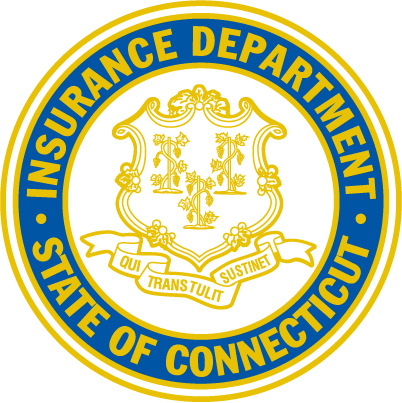
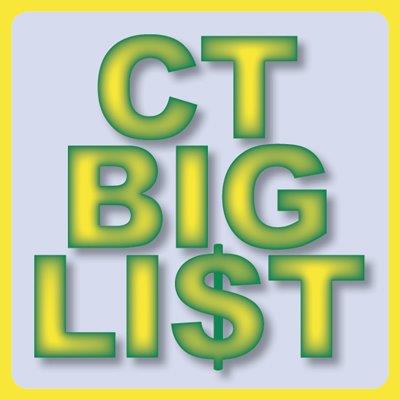 Also this month, the State Treasurer’s office is closing the year with a push urging consumers to check the agency’s CT Big List to determine if misplaced assets can be claimed. State Treasurer Denise L. Nappier said the special online publication is one component of the Treasury’s efforts to reunite rightful owners with their unclaimed property and is available through its homepage, www.ott.ct.gov.
Also this month, the State Treasurer’s office is closing the year with a push urging consumers to check the agency’s CT Big List to determine if misplaced assets can be claimed. State Treasurer Denise L. Nappier said the special online publication is one component of the Treasury’s efforts to reunite rightful owners with their unclaimed property and is available through its homepage, www.ott.ct.gov.
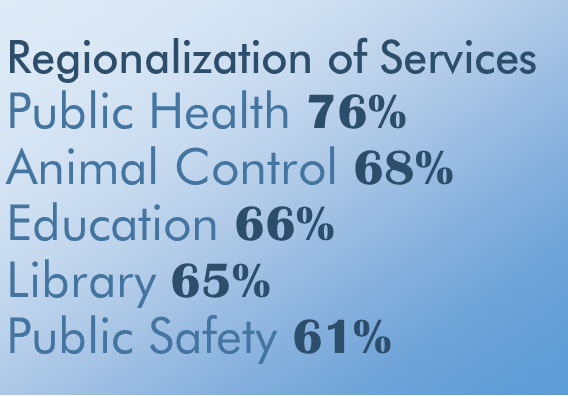 “Increasingly, towns will not be able to afford to sustain the level of services to which they have become accustomed, as budget pressures increase along with a reluctance to raise taxes. Residents showed concern, and a willingness to consider regionalism as a partial solution,” said Robert W. Santy, who serves as Board Chair of Inform CT and is President & CEO of the Connecticut Economic Resource Center (CERC) Inc.
“Increasingly, towns will not be able to afford to sustain the level of services to which they have become accustomed, as budget pressures increase along with a reluctance to raise taxes. Residents showed concern, and a willingness to consider regionalism as a partial solution,” said Robert W. Santy, who serves as Board Chair of Inform CT and is President & CEO of the Connecticut Economic Resource Center (CERC) Inc. That is the highest number of states falling short of revenue projections since 36 states budgets missed their mark in 2010, according to the NASBO report and
That is the highest number of states falling short of revenue projections since 36 states budgets missed their mark in 2010, according to the NASBO report and 
 reening, including coverage for ultrasound and MRI screening. Through volunteer efforts, Ashley has advanced legislative efforts for ‘Are You Dense Advocacy’ to ensure that women with dense breast tissue have access to an early breast cancer diagnosis. She helped form the Danny Gilman Scholarship in memory of one of their peers. Ashley serves as President of the Association of Connecticut Lobbyists.
reening, including coverage for ultrasound and MRI screening. Through volunteer efforts, Ashley has advanced legislative efforts for ‘Are You Dense Advocacy’ to ensure that women with dense breast tissue have access to an early breast cancer diagnosis. She helped form the Danny Gilman Scholarship in memory of one of their peers. Ashley serves as President of the Association of Connecticut Lobbyists.

 The STSI's 107 individual indicators are sorted into five composites: Research and Development Inputs, Risk Capital and Entrepreneurial Infrastructure, Human Capital Investment, Technology and Science Workforce, and Technology Concentration and Dynamism. The report indicated that "Connecticut showed major improvement in the Technology Concentration and Dynamism index, going from 21st to 10th. This dramatic rise marks one of the larger overall changes on this index. While modest increases were seen in the Research and Development Inputs index and Human Capital Investment index, these two indices have a much heavier focus on stock measures, and Connecticut’s aerospace and defense sectors help anchor the state’s performance in these areas."
The STSI's 107 individual indicators are sorted into five composites: Research and Development Inputs, Risk Capital and Entrepreneurial Infrastructure, Human Capital Investment, Technology and Science Workforce, and Technology Concentration and Dynamism. The report indicated that "Connecticut showed major improvement in the Technology Concentration and Dynamism index, going from 21st to 10th. This dramatic rise marks one of the larger overall changes on this index. While modest increases were seen in the Research and Development Inputs index and Human Capital Investment index, these two indices have a much heavier focus on stock measures, and Connecticut’s aerospace and defense sectors help anchor the state’s performance in these areas." In the Human Capital Investment composite index, Connecticut ranked third, as it did in 2014 and 2012, after ranking fifth in 2010. In Research & Development, Connecticut placed eighth, its second highest finish, after ranking tenth, seventh and seventh in previous indexes. Connecticut ranked 11th in Risk Capital and Entrepreneurial Infrastructure, up from 14th two years ago, but not as high as sixth place in 2012 and third in 2010.
In the Human Capital Investment composite index, Connecticut ranked third, as it did in 2014 and 2012, after ranking fifth in 2010. In Research & Development, Connecticut placed eighth, its second highest finish, after ranking tenth, seventh and seventh in previous indexes. Connecticut ranked 11th in Risk Capital and Entrepreneurial Infrastructure, up from 14th two years ago, but not as high as sixth place in 2012 and third in 2010.

